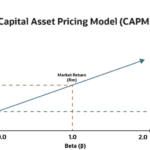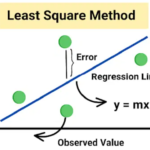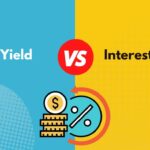
By ATGL
Updated September 24, 2024
When you want to generate income from your portfolio, you want to know how often dividends are paid to plan your cash flow, refine your reinvestment strategies, and manage your portfolio more effectively. This comprehensive guide will explore the factors influencing dividend frequency and typical payment schedules. Learn how to incorporate this knowledge into your investment strategy.
Factors That Can Influence How Often Dividends Are Paid
Several factors determine how frequently a company pays dividends:
- Company’s Financial Health: A company’s ability to pay dividends consistently depends on its financial stability and cash flow. Well-established companies with steady earnings are more likely to maintain regular dividend payments.
- Industry Standards: Different sectors have varying norms for dividend payments. For example, utility companies often pay dividends quarterly, while some REITs (Real Estate Investment Trusts) may choose monthly distributions.
- Economic Conditions: During economic downturns, companies may reduce dividend frequency or amounts to conserve cash. Conversely, in prosperous times, they might increase payment frequency or issue special dividends.
Key Dates in the Dividend Payment Process
To fully grasp dividend payment schedules, understand four important dates:
- Declaration Date: This is when a company’s board of directors announces the dividend amount, ex-dividend date, record date, and payment date. The declaration date is significant for investors as it provides insight into the company’s financial health and commitment to shareholder returns. It often coincides with earnings reports, giving you a comprehensive view of the company’s performance.
- Ex-Dividend Date: If you purchase shares on or after this date, you won’t receive the upcoming dividend. The stock price typically drops by approximately the dividend amount on this date. This date is important for timing your purchases to capture specific dividends. It’s usually set one business day before the record date.
- Record Date: The company determines which shareholders are eligible to receive the dividend based on this date. While this is important for the company’s internal processes, you should focus more on the ex-dividend date when making your trading decisions.
- Payment Date: This is when the dividend is actually distributed to eligible shareholders. The time between the record date and payment date can vary by company, typically ranging from a few days to several weeks. This gap allows the company to process the dividend payments and make necessary financial arrangements.
Typical Dividend Payment Frequencies
Companies generally follow one of these payment schedules:
- Quarterly Payments: The most common frequency in the U.S. Companies pay dividends four times a year, typically aligned with their financial reporting quarters.
- Semi-Annual Payments: Some companies, especially those based outside the U.S., pay dividends twice a year.
- Annual Payments: Less common, but some companies opt to pay dividends once a year, often after their annual financial results are published.
- Monthly Payments: While rare for individual stocks, some investment vehicles, like certain REITs and closed-end funds, offer monthly dividends to appeal to income-focused investors.
Impact of Dividends on Share Price
When a company pays a dividend, its share price typically drops by approximately the dividend amount on the ex-dividend date. This adjustment reflects the decrease in the company’s assets after the dividend payout. However, this price drop doesn’t necessarily mean a loss in value for shareholders, as they receive the dividend in return.
The market’s reaction to dividend payments can vary. Sometimes, a stock’s price might not fall by the exact dividend amount due to other market factors or investor sentiment. For instance, if a dividend increase is viewed very positively, the stock price might actually rise despite the dividend payout.
Long-term investors should focus less on these short-term price fluctuations and more on the overall return, which includes both price appreciation and dividend income. Companies with a history of consistent dividend growth often see their stock prices increase over time.
Tax Implications of Dividend Payments
Dividend income is generally taxable, but the rate depends on whether the dividends are qualified or non-qualified. Qualified dividends are taxed at the lower long-term capital gains rate, while non-qualified dividends are taxed as ordinary income.
To be considered qualified, dividends must be paid by a U.S. corporation or a qualified foreign corporation, and you must have held the stock for more than 60 days during the 121-day period that begins 60 days before the ex-dividend date. This holding period requirement encourages longer-term investment.
For high-income investors, dividends may also be subject to the Net Investment Income Tax (NIIT) of 3.8%. This additional tax applies to individuals with modified adjusted gross income over certain thresholds.
Consider the tax efficiency of your dividend investments by placing higher-yielding stocks in tax-advantaged accounts like IRAs or 401(k)s, where the dividends can grow tax-deferred or potentially tax-free in the case of Roth accounts. This strategy can help maximize your after-tax returns and build wealth more effectively over the long term.
Incorporating Dividends Into Investment Strategies
To maximize the benefits of dividend-paying investments, consider these strategies:
- Dividend Reinvestment Plans (DRIPs): Many companies offer DRIPs, allowing you to automatically reinvest your dividends to purchase additional shares, leading to compounded growth over time.
- Dividend growth investment strategy: Focus on companies with a history of consistently increasing their dividends. This approach can provide a growing income stream and potential for capital appreciation.
How Above the Green Line Can Help You Perfect Your Strategy
Navigating the world of dividend investments can be complex, but Above the Green Line is here to help. Our comprehensive tools and resources can assist you in analyzing dividend payout ratios, tracking payment schedules, and identifying promising dividend-paying stocks. To take your dividend investment strategy to the next level, explore our membership options and gain access to expert insights and advanced analytical tools.
FAQs on Dividend Payment Frequencies
How Long Do You Have To Hold a Stock To Get the Dividend?
To receive a dividend, you must purchase the stock before the ex-dividend date and hold it through that date. If you buy on or after the ex-dividend date, you won’t receive the upcoming dividend.
How Often Are Coca-Cola Dividends Paid?
Coca-Cola pays dividends quarterly. The company has a long history of paying and increasing its dividend annually for over 50 consecutive years, making it a “Dividend King.”
How Often Are Dividends Paid S&P 500?
Most companies in the S&P 500 that pay dividends do so on a quarterly basis. However, individual company policies may vary, with some opting for semi-annual or annual payments.
How Often Are Dividends Paid on Mutual Funds?
Mutual fund dividend frequencies can vary. Some pay quarterly, others semi-annually or annually. The frequency often depends on the fund’s investment objectives and the types of securities it holds.






